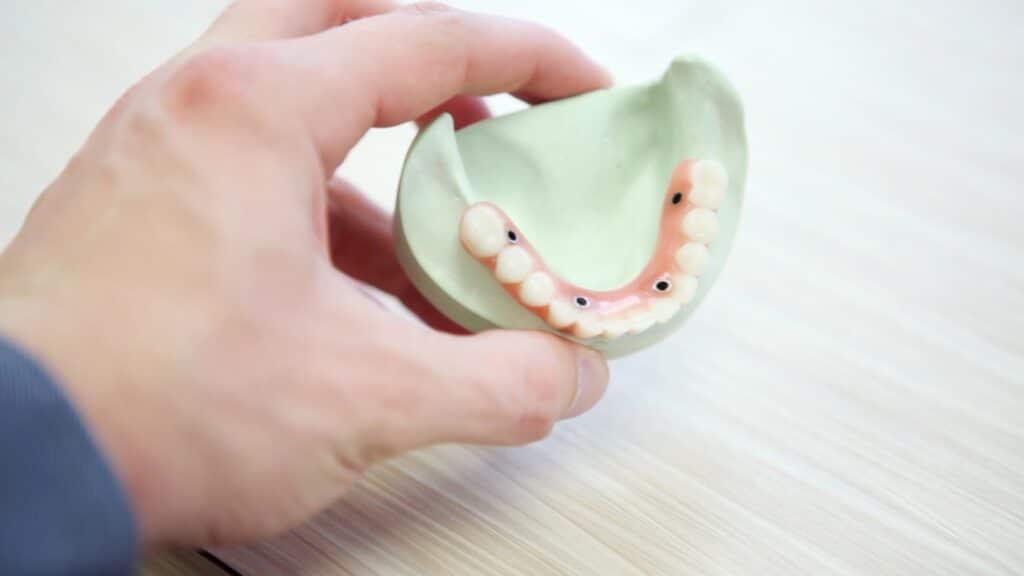Aftercare for dental fillings
Tooth decay is very common in the US: virtually all Americans have it.* Almost 25% of us walk around with an unfilled cavity. The solution is simple and widely available: dental fillings. With proper care, they can last for many years. Read this guide about aftercare for dental fillings to learn all about it.
In This Article:
- Dental Fillings: The Procedure
- Aftercare for dental fillings: a comprehensive guide
- Why is aftercare after a dental filling important?
- Common Problems After Dental Fillings
Dental Fillings: The Procedure
Let’s look at what happens during a dental filling procedure. Rest assured, it’s a routine process to preserve your oral health.
When you come in for a dental filling, here’s what typically occurs.
First, we’ll ensure your comfort by administering a local anesthetic. You’ll feel little to no discomfort during the procedure. Using specialized instruments, we’ll gently remove the decayed portion of your tooth. This step is vital to stopping the decay from spreading.
To create an ideal space for the filling, we’ll carefully prepare the cavity in your tooth. This step ensures a secure fit for the new filling. Depending on the extent of the damage and your preferences, we’ll discuss the available filling materials with you. Once we’ve chosen the appropriate filling material, we’ll expertly place it in the prepared space. Our goal is to ensure it fits seamlessly with your natural tooth structure.
After placement, we’ll sculpt the filling to match the contours of your tooth, ensuring a comfortable fit. A final polish leaves it smooth and natural-looking. After the filling is in place, we’ll review your bite to make sure it is comfortable and natural. If necessary, we’ll make adjustments to ensure optimal functionality.
We share more details on the dental filling procedure here: A step-by-step guide through our dental filling procedure.

Types of Fillings
There are various options for dental fillings to choose from. Each has its unique characteristics and advantages. Let’s look at the most common ones.
Amalgam fillings
Amalgam fillings, also known as silver fillings, have been a go-to choice for decades. They’re made by combining mercury with other metals like silver, tin, and copper. The result is a durable and cost-effective filling material.
- Amalgam fillings are known for their longevity, making them an excellent choice for molars and teeth that bear the brunt of chewing.
- These fillings are budget-friendly, making them a practical option for many patients.
Composite fillings
Composite fillings are a popular choice for those who want a natural look. They’re made of a mixture of plastic resin and finely ground glass particles, resulting in a tooth-colored material that blends seamlessly with your natural teeth.
- Composite fillings mimic the appearance of your natural teeth, making them ideal for front teeth and visible areas.
- They bond well with the tooth structure, which can help prevent further damage.
Glass ionomer fillings
Glass ionomer fillings are a versatile option. They’re composed of acrylic and a type of glass material. While they may not be as durable as some other fillings, they have unique advantages.
- Some glass ionomer fillings are tooth-colored, providing a more aesthetically pleasing choice.
- They release fluoride for about 3 years, which can help prevent further tooth decay.
Gold fillings
Gold fillings, although less common nowadays, offer exceptional durability and biocompatibility. They are made of gold alloy and are well-tolerated by the body.
- Gold fillings can last very long, making them a durable investment in the long run.
- They are kind to the surrounding gum tissues and are often preferred for certain situations, like people with allergies to other filling materials.
Choosing the right type of filling depends on various factors, including the location of the tooth, your budget, and your aesthetic preferences. We will discuss these options with you and help you make an informed decision based on your needs.

Aftercare for dental fillings: a comprehensive guide
After getting your dental filling, it’s essential to take proper care of your tooth to ensure a smooth recovery and maintain your oral health.
Pain management and sensitivity after dental fillings
Once the numbing wears off, it’s common to experience some discomfort or sensitivity in the treated tooth. This is a normal response and usually lasts no more than a few days. To manage it, you can consider taking over-the-counter pain relievers like ibuprofen or acetaminophen as recommended by your dentist. These medications can help alleviate any discomfort and ensure a more comfortable recovery.
Gentle oral hygiene
Maintaining good oral hygiene is crucial to prevent complications after your dental filling is placed. Continue brushing your teeth regularly, but be particularly gentle around the filled tooth. Opt for a soft-bristle toothbrush to avoid any risk of damaging the filling. Don’t forget to floss daily, but be cautious when flossing near the filled tooth to prevent accidentally dislodging the filling. Additionally, rinse with an antibacterial mouthwash to reduce the risk of infection, ensuring a healthier healing process.
Eating and drinking after a filling
Your dietary choices play a significant role in the healing process and the longevity of your filling. In the hours after the procedure, it’s advisable to stick to soft foods and liquids, especially if your mouth is still numb. Avoid chewing hard or sticky foods (like apples or fudge) on the side with the new filling for a couple of days to prevent it from damage or falling out. While it’s normal to experience some sensitivity to hot or cold foods during this time, that should improve within a few days to a week. Furthermore, limiting your consumption of sugary and acidic foods and beverages will not only help protect your new filling but also contribute to preventing future dental issues. In other words, skip the sodas.
General tips
In addition to the specific steps mentioned above, there are some general tips to keep in mind to promote a successful recovery.
- Stay hydrated by drinking plenty of water to maintain moisture in your mouth, which aids in the healing process.
- Avoid alcohol and tobacco products for at least 24 hours following the procedure, as these substances can impede the healing process and may irritate the treated area.
- Pay close attention to any unusual signs, such as persistent pain, swelling, or an unusual taste in your mouth. If you notice anything concerning, don’t hesitate to contact your dentist promptly for guidance and evaluation.
Follow-up with the dentist
Don’t forget the importance of attending your follow-up appointment as scheduled. During this visit, your dentist will thoroughly examine the filling to ensure everything is in order and that your tooth is healing as expected. If you experience any issues or concerns before your scheduled appointment, do not hesitate to reach out for guidance and reassurance.

Why is aftercare after a dental filling important?
Aftercare for dental fillings plays a vital role in ensuring the long-term success of your dental work. While dental fillings typically have a lifespan of 5 to 10 years, proper care and maintenance can significantly extend their durability. Neglecting aftercare, on the other hand, can lead to premature wear, damage, or even the need for replacement.
A diligent aftercare routine can also save you money in the long run. You prevent cavities, infections, and other dental problems. These can escalate into extensive and costly treatments. Good aftercare not only preserves your oral health but also safeguards your wallet by reducing the need for frequent and expensive dental visits.
Common Problems After Dental Fillings
While dental fillings are generally a straightforward and effective solution for treating cavities, there are some common issues that can arise after the procedure. If any of these problems are persistent, please make a follow-up appointment with us.
- Pain after filling. It’s not uncommon to experience some mild discomfort or soreness in the hours following the filling. This discomfort typically subsides within a few days. Over-the-counter pain relievers can provide relief, as recommended by your dentist.
- Tooth sensitivity after filling. Tooth sensitivity to hot or cold temperatures is another common issue post-filling. This sensitivity is usually temporary and should improve within a few days to a week. To minimize discomfort, avoid extreme temperature foods and drinks during this period.
- Sensation adjustment. Your filled tooth may initially feel slightly different from your other teeth when biting or chewing. This adjustment period is natural as your mouth adapts to the new restoration. It should normalize in a short time.
- Filling irregularities. Occasionally, dental fillings may have small irregularities, like rough edges or an uneven surface. These issues can be addressed with a simple follow-up visit to your dentist for adjustments.
- Cracked or chipped fillings. Although fillings are designed to be durable, they can break or chip over time due to factors like teeth grinding or biting into hard objects. If you suspect any damage to your filling, contact your dentist for an evaluation.
- Recurrent decay. Proper aftercare is essential to prevent recurrent decay around the filling. Neglecting oral hygiene can lead to new cavities forming near the existing filling, necessitating additional dental work.
- Allergic reactions. In rare instances, some individuals may experience allergic reactions to filling materials. If you notice unusual symptoms like persistent swelling or rashes, consult your dentist immediately.
These issues occur quite often and are generally manageable. They should be temporary. If you encounter any of these problems or have concerns after getting a dental filling, don’t hesitate to reach out to your dentist.

